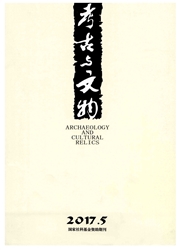

 中文摘要:
中文摘要:
“彩陶之路”是以彩陶为代表的早期中国文化以陕甘地区为根基自东向西拓展传播之路,也包括顺此通道西方文化的反向渗透。“彩陶之路”从公元前4千纪一直延续至前1千纪,其中又以大约公元前3500年、公元前3000年、公元前2200年和公元前1300年四波彩陶文化的西渐最为明显。具体路线虽有许多,但大致可概括为以青藏高原为界的北道和南道。“彩陶之路”是早期中西文化交流的首要通道,是“丝绸之路”的前身,对中西方文明的形成和发展都产生过重要影响。
 英文摘要:
英文摘要:
"The Polychrome Ceramic Road" refers to the network of inter-linking routes along which Early Chinese cultures characterized by polychrome ceramics expanded and transmitted from east to west started from present-day Shaanxi and Gansu region. Via this passage cultures from the West also penetrated and spread reversely to China. The Polychrome Ce- ramic Road lasted from the 4th millennium BC to 1st millennium BC. During this period, there are four major events or hori- zons in 3500 BC, 3000 BC, 2200 BC, and 1300 BC respectively, during which the westward spread of polychrome ceramics was the most obvious. Although there are a lot of specific routes, generally they could be summarized into the northern route and southern route which were divided by the Tibetan Plateau. The Polychrome Ceramic Road was the primary passage for early Sino-Western Cultural exchanges. In this sense it would be considered as the predecessor of the "Silk Road". Thus it had exerted si~aificant influence on the formation and development of civilizations in the East and the West.
 同期刊论文项目
同期刊论文项目
 同项目期刊论文
同项目期刊论文
 期刊信息
期刊信息
